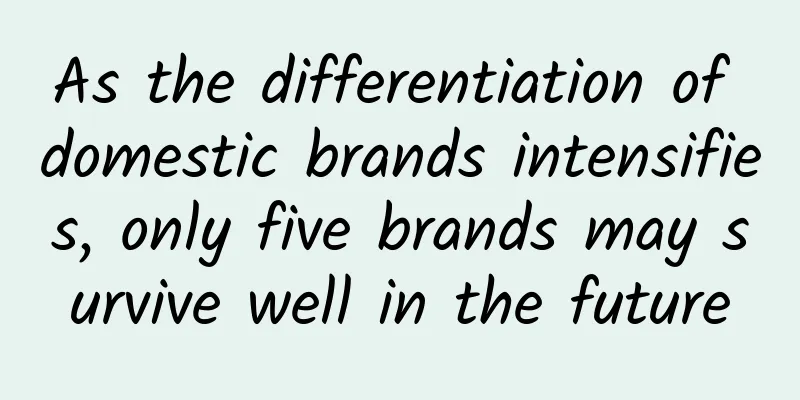|
As May begins, the domestic passenger car market is still cooling down. Data from the China Association of Automobile Manufacturers (CAAM) showed that in May this year, domestic passenger car sales were 1.751 million units, a year-on-year decrease of 2.6%; however, cumulative sales in the first five months reached 9.421 million units, a slight increase of 1.5% year-on-year.
In the context of a poor macro environment, the sales of domestic brands such as GAC and Geely continued to grow from January to May, while Great Wall Motors suffered a setback due to the continuous decline of models such as the H6, and Changan Automobile also saw a 6.3% decline. In the first echelon of domestic brands, differentiation is further intensifying.
According to the data from the China Automobile Association, in the first quarter of this year, except for Geely and GAC, Changan and Dongfeng were relatively stable, increasing by 6.8% and 9.1% respectively. By April, Changan also joined the ranks of declining sales.
Some industry insiders believe that the fluctuations in sales of some domestic brands reflect the comprehensive game between automakers in terms of products, technology and management capabilities.
At the Global Automotive Forum held on June 8, Zhu Huarong, president of Changan Automobile, pointed out that "competition will be more intense in the future than it is today, especially in the next five years. I think that domestic brands in the Chinese market will not expand to the global field for the time being. In the next five years, if five of them can survive well, it will be very satisfactory." Sales differentiation intensifies
Data from the China Association of Automobile Manufacturers showed that in the first five months of this year, Chinese-branded passenger cars had a market share of 44.4%, up 1.1 percentage points from the same period last year.
According to statistics from the China Association of Automobile Manufacturers, from January to May this year, among the top Chinese brand passenger car sales groups, Geely's wholesale sales increased by 91.4% year-on-year to 456,000 vehicles, and GAC's sales increased by 45.9% year-on-year to 208,000 vehicles. Although the overall sales volume of these two automakers is not the largest, their growth rate has led among domestic brands when the overall auto market only increased by 1.5%.
Among several other large automobile groups, SAIC's independent brand ranked first in sales in the first five months, with sales of 962,000 vehicles, maintaining a growth of 9.3%; Changan, Dongfeng and BAIC all declined to varying degrees.
In addition, in the first five months of this year, BYD and Brilliance saw declines of 14% and 27.9% respectively, and JAC Motors' sales fell 40.5% year-on-year, and the differentiation among domestic brand automakers became more obvious.
The reporter checked the data of China Automobile Association and found that from January to May this year, the top five domestic automakers with the highest sales volume sold a total of 2.661 million vehicles, accounting for 28.2% of the total sales volume of 9.421 million passenger cars. At the end of last year, this proportion was 25.9%; the top 10 domestic automakers with the highest sales volume sold a total of 3.637 million vehicles, accounting for 38.6%, an increase of 1.8 percentage points from last year's 36.8%. It can be seen that the concentration of domestic brands is gradually increasing.
In addition, some star models of the first-tier domestic automakers have also seen sales fluctuations this year. According to the China Passenger Car Association, in May, Geely Emgrand EC7 sales fell 5.9% year-on-year to 14,200 units, and Haval H6 sales also fell 5.8% year-on-year to 35,300 units, and have been declining for three consecutive months.
Zhu Huarong believes that "in the future, it is possible that 5 to 10 domestic brands will survive, but their lives may not be so comfortable."
Explore new profit paths
As the market is unstable, the ability of car companies to respond becomes more important.
At the Global Automotive Forum, An Conghui, president of Geely Auto, said, "For the automotive industry, if one generation of products is not done well, it will definitely affect the development of the next 3 to 5 years. Now, Geely is doing things for 2020 and beyond, because the law of automotive development is like this, and we must be cautious and unwavering in fighting a protracted war."
For domestic brands, in addition to the ability to cope with current short-term sales fluctuations, future product planning, channel profitability, and new technology research and development are all issues that need to be considered.
For example, for Changan Automobile, while dealing with declining sales, channel profitability is also a key development focus.
Zhu Huarong said, "Changan is exploring some new channels for profitability, but innovation also requires a process of exploration. Traditional 4S stores are now high-cost and low-efficiency, and they will definitely be abandoned and transformed in the future. Of course, it will take some time, but this era will come soon."
There is also a view in the industry that in the future development, the concentration of domestic brands may gradually increase, but judging from soft power such as product planning and channel profitability building, it is difficult to conclude which brands can maintain long-term stability in the development. As a winner of Toutiao's Qingyun Plan and Baijiahao's Bai+ Plan, the 2019 Baidu Digital Author of the Year, the Baijiahao's Most Popular Author in the Technology Field, the 2019 Sogou Technology and Culture Author, and the 2021 Baijiahao Quarterly Influential Creator, he has won many awards, including the 2013 Sohu Best Industry Media Person, the 2015 China New Media Entrepreneurship Competition Beijing Third Place, the 2015 Guangmang Experience Award, the 2015 China New Media Entrepreneurship Competition Finals Third Place, and the 2018 Baidu Dynamic Annual Powerful Celebrity. |










